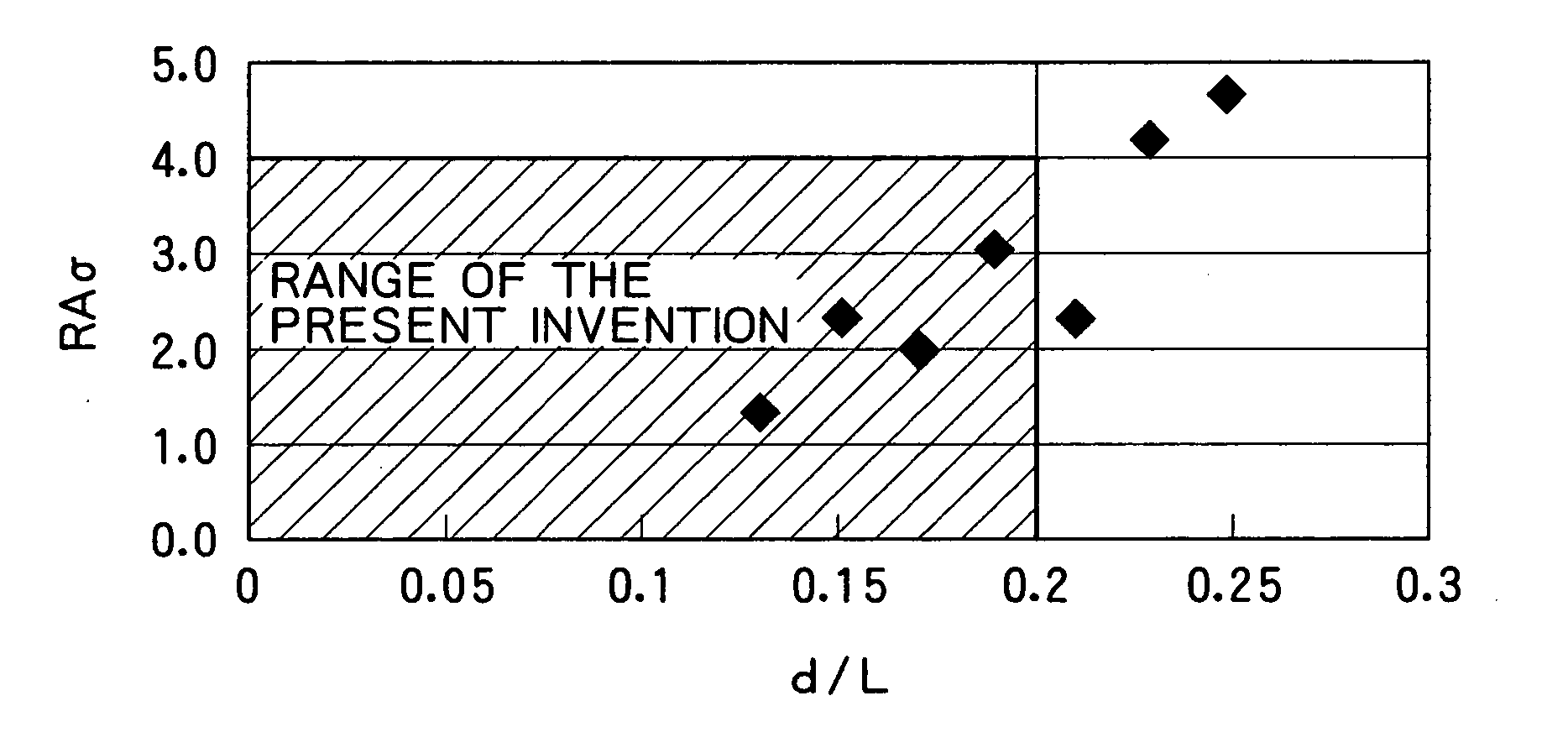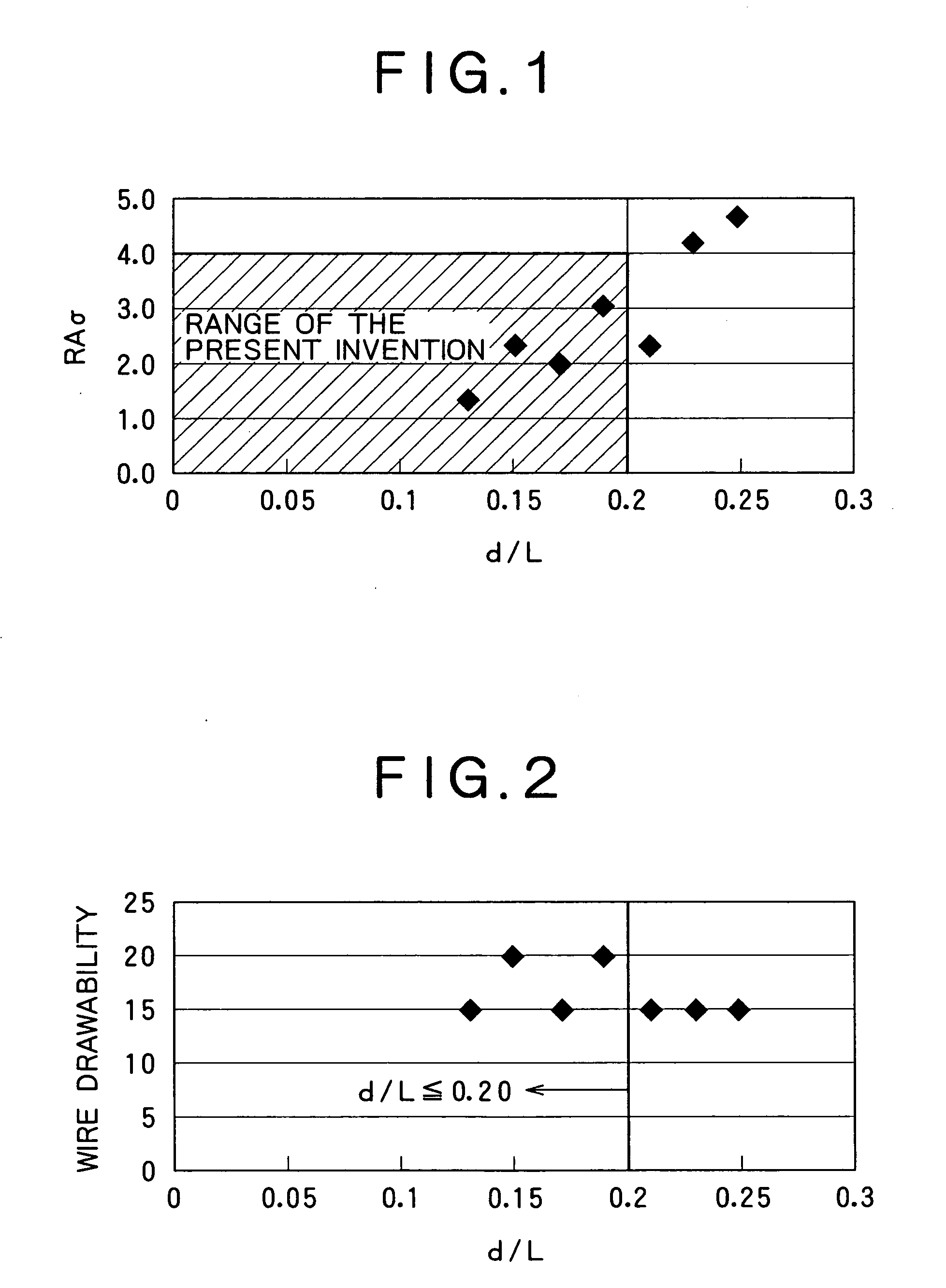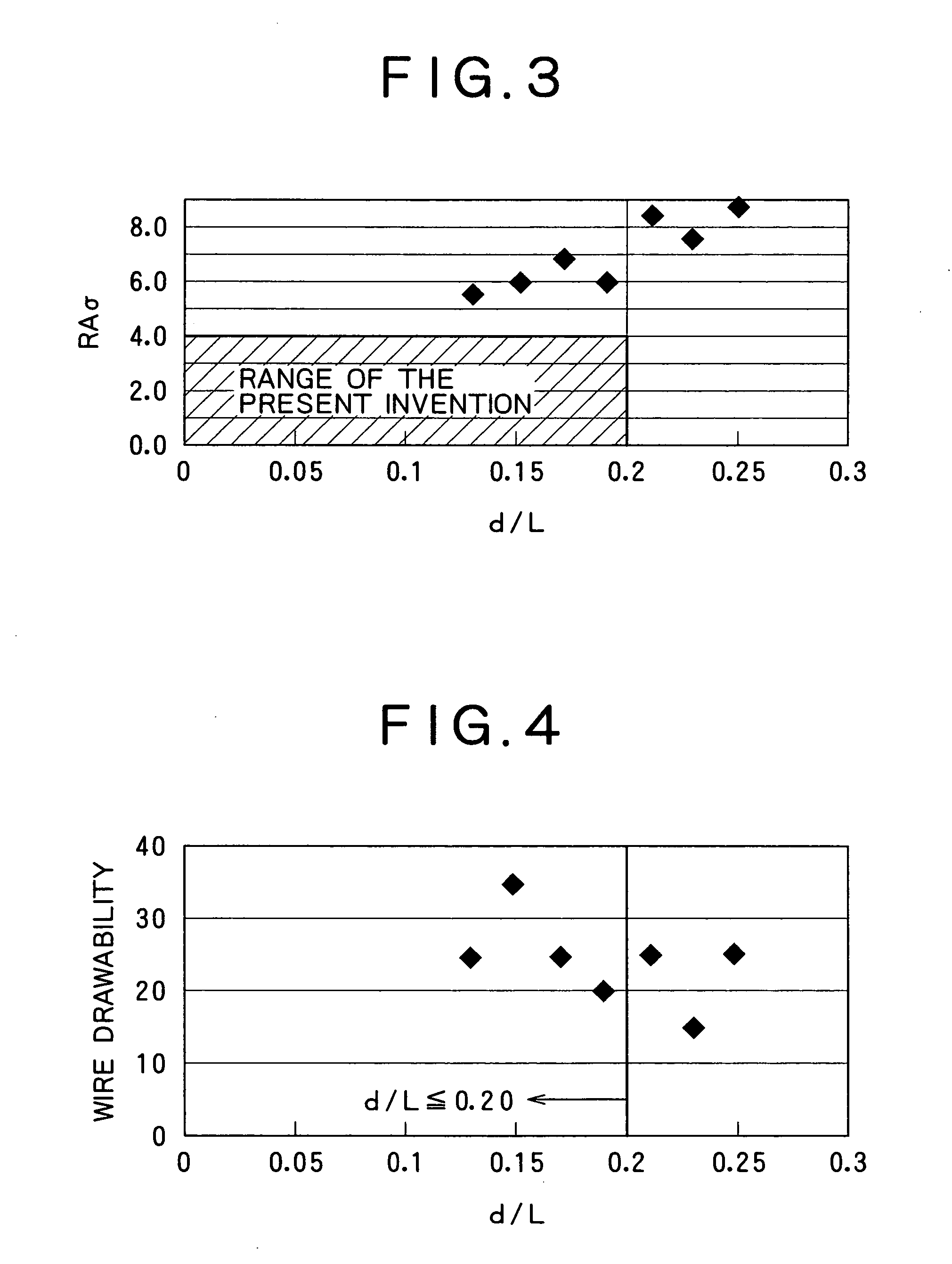Hot milled wire rod excelling in wire drawability and enabling avoiding heat treatment before wire drawing
- Summary
- Abstract
- Description
- Claims
- Application Information
AI Technical Summary
Benefits of technology
Problems solved by technology
Method used
Image
Examples
example 1
(Consideration of Production Conditions)
[0079] In the present example, the cooling rates after rolling and the loading densities (d / L) were changed variously and the influences thereof on the mechanical properties were investigated.
[0080] To be more precise, a casting comprising 0.82% C-0.21% Si-0.51% Mn was heated to 1,150° C. and hot-rolled (the finish rolling temperature being 800° C. to 900° C.), and a wire rod 5.5 or 5.0 mm in diameter was produced. The coiled wire rod was subjected to a Stelmor cooling device, the average cooling rate on a Stelmor conveyer was controlled by any one of the following cooling methods A to C, the loading density was controlled to be in the range from 0.13 to 0.22 by regulating the rolling speed and the Stelmor conveyer transfer speed, and thus a 2-ton coil was produced.
Cooling Method A (a Method According to the Present Invention)
[0081] The average cooling rate was controlled to 10° C. / sec. up to 670° C. and to 5° C. / sec. in the temperature r...
example 2
(Consideration of Chemical Components)
[0096] In the present example, the steel components were changed variously while the production conditions were kept constant and the influences thereof on the mechanical properties were investigated.
[0097] To be more precise, a casting comprising the components shown in Table 3 was hot-rolled under the same conditions as Example 1 and a wire rod 5.0 mm in diameter was produced. Thereafter, the produced wire rod was subjected to a Stelmor cooling device, the average cooling rate on a conveyer was controlled by the aforementioned cooling method A, the loading density was controlled to be in the range from 0.13 to 0.20 by regulating the rolling speed and conveyer transfer speed, and thus a wire rod coil was produced. The mechanical properties and wire drawability of the produced wire rod coil were measured in the same way as Example 1. The results are shown in Table 3. Note that, the pearlite area percentage in any of the structures of the wire ...
example 3
(Consideration of the Average Diameter of Nodules in a Pearlite Structure)
[0105] A casting having the composition of 0.82% C-0.18% Si-0.5% Mn was heated to 1,150° C., then hot-rolled and coiled under the conditions shown in Table 4, and a wire rod 5.5 or 5.0 mm in diameter was produced. The coiled wire rod was subjected to a Stelmor cooling device, the cooling conditions and loading density were adjusted as shown in Table 4 on a Stelmor conveyer, and a 2-ton coil was produced.
[0106] The mechanical properties and structure of the produced wire rod coil were measured by the same method as Example 1 and the average diameter of nodules in the pearlite structure was also measured by the aforementioned method. The wire drawability was measured under the same conditions as Example 1 except that the wire breakage frequency (per ton) was measured at two drawing speeds of 300 and 500 m / min. when the wire drawing test was carried out up to a diameter of 1.2 mm.
[0107] The results are shown i...
PUM
| Property | Measurement | Unit |
|---|---|---|
| Length | aaaaa | aaaaa |
| Length | aaaaa | aaaaa |
| Fraction | aaaaa | aaaaa |
Abstract
Description
Claims
Application Information
 Login to View More
Login to View More - R&D
- Intellectual Property
- Life Sciences
- Materials
- Tech Scout
- Unparalleled Data Quality
- Higher Quality Content
- 60% Fewer Hallucinations
Browse by: Latest US Patents, China's latest patents, Technical Efficacy Thesaurus, Application Domain, Technology Topic, Popular Technical Reports.
© 2025 PatSnap. All rights reserved.Legal|Privacy policy|Modern Slavery Act Transparency Statement|Sitemap|About US| Contact US: help@patsnap.com



